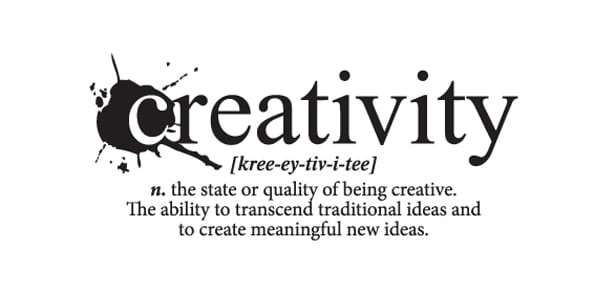 This is not a blog post about being creative at a moment’s notice. You won’t find tips about how to deliver the BIG idea the second you’re asked for it, or research touting the amazing effects of coloring on creativity. I won’t tell you about how I, Kelly Kenny, blast instrumental pop covers when I need to deliver kick-ass creative thinking (which totally works by the way). This is a blog post about being creative when the challenge in front of you is so incredibly personal, it feels like everything is on the line.
This is not a blog post about being creative at a moment’s notice. You won’t find tips about how to deliver the BIG idea the second you’re asked for it, or research touting the amazing effects of coloring on creativity. I won’t tell you about how I, Kelly Kenny, blast instrumental pop covers when I need to deliver kick-ass creative thinking (which totally works by the way). This is a blog post about being creative when the challenge in front of you is so incredibly personal, it feels like everything is on the line.
I have never been afraid to dig deep emotionally for an idea that breaks through. I fancy myself someone who can put themselves in the shoes of others and convey empathy and support for all. I’ve always been very quick to pull and share from my own personal experience when ideating around a client issue, until I was asked to work on a brief for a drug that I’ve known to save lives.
Not unlike 44% of Americans, my family has been affected by the growing opioid epidemic. My beautiful, amazing, way more charming than I am sister has been battling her addiction to painkillers for over five years, and is now- thankfully- in recovery. So needless to say, when I recently had the opportunity to work on the creative for a drug that reverses the effects of overdoses, it hit very close to home.
My time on the account was one of the most incredible experiences of my career, while simultaneously being the most exhausting. We’ve always been told that the best art comes from the darkest places, and I’m not here to argue otherwise. In fact, I’m here to confirm that it’s 100% true. But, it’s really damn hard.
So, in a nod to Meryl Streep’s Golden Globes speech, and in an effort to make it a little easier for the next person, I’ve put together some tips to help marketers turn their broken hearts into art. Thanks, Leia.
1. Talk it Out… Seriously:
You should never keep your personal investment a secret for three reasons:
It WILL be evident, and if no one knows why you’re sobbing at your desk, people will stare.
You just became the most valuable member of your team. Your input is going to be critical in generating an insight that is relevant and a creative idea that is emotionally resonant.
The best ideas are born in safe spaces, and the only way you build that space is by creating a support system. You’re going to need to let someone know not only why this affects you, but why it means so much to you that you be involved.
2. Lead with Education:
Not everyone has had your same experience, and that’s OK. The most beautiful part about brainstorming is the ability to draw from a wide range of experiences at once. If someone uses a term that’s not quite “PC,” explain that the group should be aware of its possible implication. Strive to be a constant educator.
3. Embrace Emotion:
As a creative who is obsessed with all things Cannes Lions, I understand that the best work and the most powerful ideas tap into pure emotion. So, let yourself go there. You’re never going to truly connect if you do it half-way. Write everything you’re feeling down and why. In a day or two, revisit what you wrote and ideate from there. Therapeutic benefits aside, I promise you’ll have more than enough inspiration for potentially award winning work.
4. Check Yourself:
Ask yourself regularly if you’re OK and try not to react too quickly. Your emotions will be running high (if you’ve followed the last tip correctly) and it will be easy to get caught up. Ask someone you trust for their opinion, take a deep breath and recalibrate.
Remember, you are not alone. Not in your struggle. Not in your fear of opening up. Not in your want or need to fix what may be broken. And certainly not if you want to follow me on Twitter. I’m up all the time, with an ear to listen and thinking of ways to make the world a little more creatively courageous.